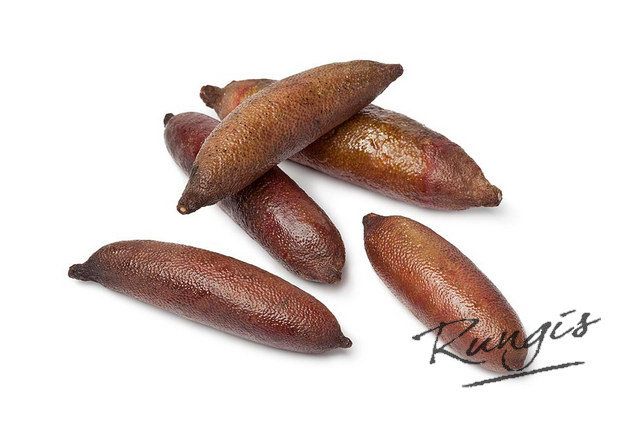The Dutch buddha finger
The Dutch buddha finger is a citrusfruit with a small amount of pulp. It however gives off a very strong and pleasant aroma. We at Rungis are very proud to work together with a very passionate grower, who is able to add the buddha finger to the Dutch catalog of fruits.
The fruit finds its origin in the North East of India and China, the places where Buddhism originates. This ofcourse explains the name of this excentric fruit, which is also called buddha’s hand. As of now, most chefs work with buddha finger from Australia, New-Zealand and parts of southern Europe.
The Dutch buddha finger has a bright yellow color. This is due to the fact that the citrusfruit develops a very thick skin in the Dutch coldish climate. The skin, filled with etherial oils, is what gives the fruit its strong recognizable aroma. The fruit has a minimal amount of flesh and tastes somewhat sweeter than a regular lemon would taste.
Growing the Dutch buddha finger
Inside of an unheated greenhouse, the buddha fingertree grows in full soil. To protect the tree from vermin, like aphid, biological pesticides in the form of insects are used. These specific insects cause a natural balance by counteracting the vermin. The fruit is ready to be picked in the winter.
"The resulting smell will certainly be noticed"
Proud of our growers
At Rungis we are very proud of our growers! Frank Kesteloo’s nusery garden is on the edge of the Biesbosch in Dordrecht. The logistic line to Rungis almost could not have been any smaller. This results in the fruit only being picked when it’s well-riped. To gain a bright yellow color, the fruit has to survive a couple cold nights. When it’s cold, the fruit automatically stores extra etherial oils in its skin. These oils work as a natural antifreeze and cause the buddha finger to have its typical, pleasant smell.
Application in the kitchen
What makes the fruit special, is that it can be used as a whole. Normally, the skin of citrusfruit gives off a bitter taste. This is the case with for example lemons and limes. However, the buddha finger is somehwat different. The skin of this fruit can be exceptionally well used. A popular way to incorporate the fruit in any of your dishes is by grating it over it. Grating the fruit at the table of your guests is a great way to put on a show. The resulting smell will certainly be noticed!







